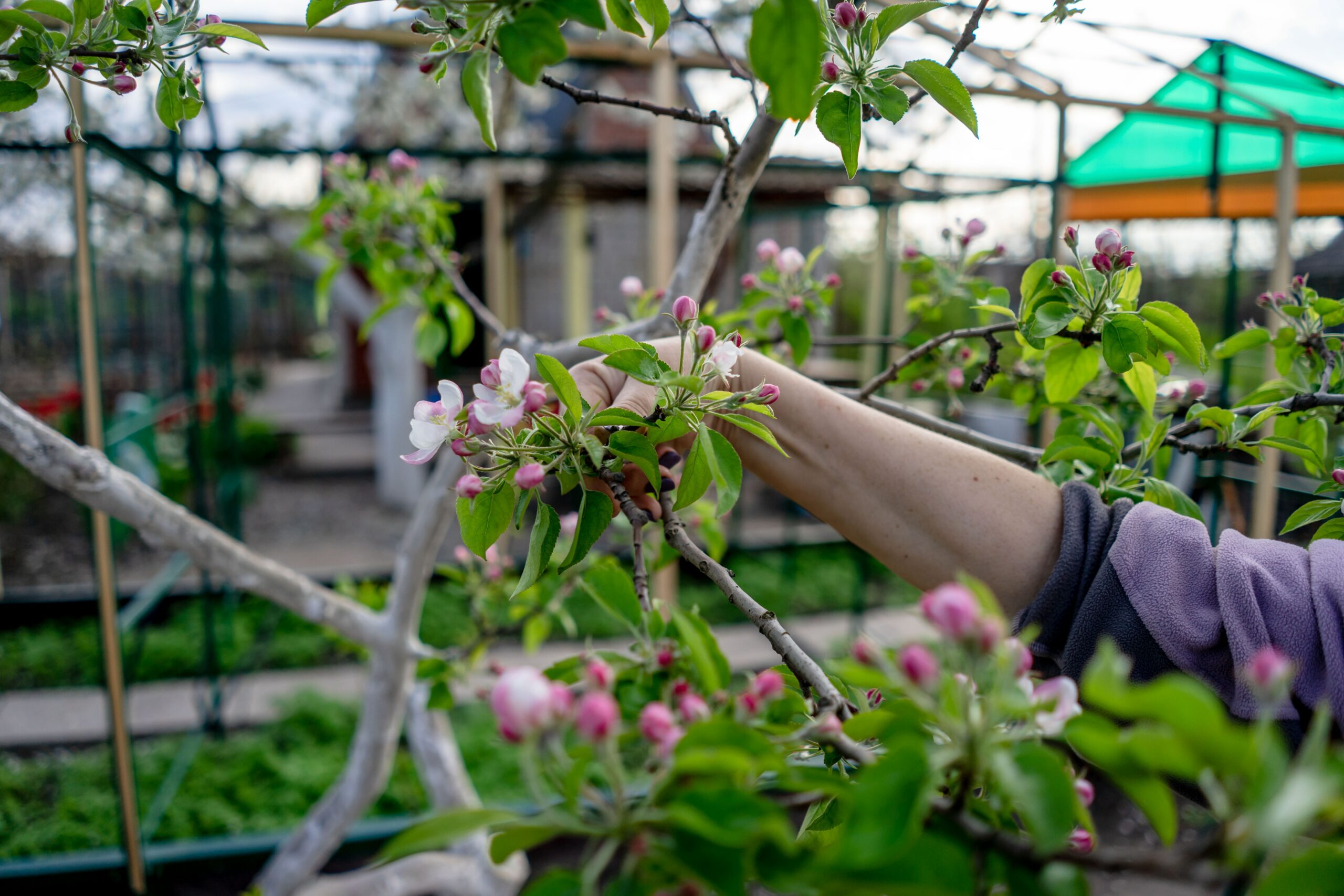Although the terms “trimming” and “pruning” are occasionally used interchangeably, they actually have distinct objectives. Pruning primarily addresses the tree’s present condition, entailing the elimination of deceased, diseased, or infected sections to preserve its overall health. On the other hand, trimming encompasses the removal of both unhealthy and healthy branches and foliage, primarily for aesthetic reasons. The ultimate goal of trimming is a pleasing shape. While this can work well for plants such as shrubs, it is not always encouraged when it comes to trees.
When contemplating benefits of tree pruning, numerous factors should be taken into account. While tree pruning offers numerous benefits for both us and the tree itself, it can also lead to a decline in tree health, decay, or potential issues if executed improperly. Careful and correct pruning techniques are essential to avoid such problems and ensure the long-term well-being of the tree.
Trees have a unique ability to compartmentalize as they grow steadily over the course of many years, ensuring their strength and upward growth. This process involves the formation of distinct sections within the tree to impede decay. Compartments within the tree’s structure can seal themselves off and prevent problems from spreading.
There are specific locations on a tree, such as nodes or branch collars, where branch removal allows the tree to heal and isolate the affected area. However, if a cut is made elsewhere, the surrounding wood may decay and spread throughout the rest of the tree. Once decay takes hold, it becomes nearly impossible to eradicate, making tree care significantly more challenging. This highlights why pruning is a preferable option to trimming as it promotes the tree’s overall health and well-being. Pruning should only be done when a tree requires it, not just for aesthetics.


Types of Pruning
Thinning
Pruning is often performed to achieve thinning, which can be a delicate procedure. Thinning aims to promote the growth of larger branches and prevent tightly packed branches from being too close to each other. The main benefit of pruning to thin out trees is to help sunlight reach interior leaves. While thinning offers benefits, excessive pruning should be avoided as it can be stressful for the tree which may result in counterproductive reactive sprouts from forming.
Reduction
Reduction pruning is employed when a tree’s height is excessive for a particular space or when a long limb poses a problem by contacting a structure such as a house. In this technique, the end of the limb is reduced back to a suitable branch, enabling the branch to compartmentalize the resulting wound. This approach is also useful for gradually eliminating a branch with a defect over time, especially when the branch is too large to be removed all at once, in order to ensure the tree’s overall health.
Canopy Raising
Canopy raising, or lifting, is a common type of tree pruning. Its goal is to create sufficient clearance for vehicles and pedestrians along streets and sidewalks. This technique is particularly beneficial for young trees, as the resulting wounds are small enough for the trunk to grow and heal effectively.
It is crucial to exercise caution when raising the canopy too rapidly, especially for younger trees. The gradual development of a tapered trunk gives the tree strength to withstand strong winds, and lower branches assist the tree in this growth. An expert can determine a safe limit for pruning young trees to prevent problems from developing. While canopy raising can be done on older trees, it is healthier for this pruning to be done on younger trees.
Canopy Cleaning
Canopy cleaning, or the practice of pruning trees to remove dead, diseased, and broken limbs, is another commonly employed pruning technique. The primary goal of this method is to enhance the overall health and appearance of the tree. Typically, a work order specifies the removal of limbs larger than one or two inches in diameter, as it would otherwise be a time-consuming and costly task to eliminate all the dead twigs.
It is recommended that tree owners consider canopy cleaning, also known as deadwooding, at regular intervals of approximately five years. This practice not only gives the trees a neat and tidy appearance but also significantly reduces the amount of falling debris during high winds and storms. By proactively engaging in canopy cleaning, tree owners can enjoy the aesthetic benefits while promoting the tree’s vitality and minimizing potential hazards caused by diseased or broken limbs.
When Should You Prune?
The optimal time for pruning trees is during their dormant period, meaning late winter to early spring for trees in the Pacific Northwest region. This is actually the only suitable time for pruning birch trees and American elms. Winter is particularly favorable for shade trees like ash and oak, while deciduous fruit trees such as apples, cherries, and pears should be pruned in midwinter.
The period between November and March is generally considered favorable for pruning, with a suggestion to wait until after February 1st, especially in western Oregon, to avoid potential damage from winter freezes. Similarly, in areas east of the Cascade Mountains, March 15th is recommended as the best time for pruning. Pruning during the dormant season not only minimizes stress on the tree but also allows for better visibility of its structural framework in the absence of leaves. Benefits of pruning will best be reaped if it is performed during the correct season.
It’s never too early to plan ahead, and fall is an appropriate time to reach out to an arborist and schedule an appointment for the upcoming months. By taking proactive steps and consulting with professionals, you can ensure that your trees receive proper care and attention during the most suitable time for pruning.
Are you considering pruning for your trees but don’t know where to start? Request a Free Estimate from Western States Arboriculture today! We are experienced working with the unique trees and weather conditions here in the Pacific Northwest.🌳
